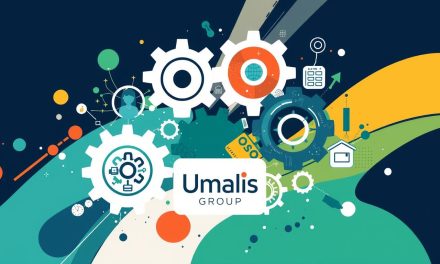As an independent professional in France, steady income often starts with a few loyal clients. I once met a freelance designer who, after a rocky first year, focused on deepening ties with five steady accounts. Within months, cash flow smoothed and stress fell. That shift began with clear onboarding and a simple follow-up rhythm.
This article explains how you can do the same without big budgets. We ground the case in facts: keeping an existing client is far cheaper than winning a new one, and small gains in rétention can lift profits dramatically.
Expect a practical guide: definitions and formulas, journey-aligned strategies, onboarding fixes, communication cadence, feedback loops, loyalty mechanics, tooling, and pricing tips. Our tone is consultative and kind; our advice aims to be immediately useful for solo consultants, creators, coaches, and micro-agencies serving B2B or B2C.
Quick wins include tightening onboarding, segmenting email journeys, and adding a lightweight feedback loop to spot at-risk accounts early. You do not need enterprise budgets—clarity, responsiveness, and respectful follow-up often deliver the biggest gains.
Table of Contents
Key Takeaways
- Prioritize rétention as a primary growth lever for profit stability.
- Small retention lifts produce large economic gains for your business.
- Apply simple onboarding and segmented journeys this week for quick wins.
- Measure a few weekly and monthly signals to protect cash flow.
- Be present without intrusive outreach to build trust and referrals.
Search intent and why client retention matters today
For solo professionals, simple systems beat ad spend when protecting monthly cash flow. Readers arrive seeking clear playbooks: steps, tools, and quick benchmarks they can implement without large teams.
Informational intent: practitioners seeking best practices and playbooks
You want actionable frameworks — onboarding fixes, cadence templates, and automated feedback loops that save time and raise satisfaction.
These approaches answer search intent directly: the reader needs practical, low-cost tactics that improve experience and service delivery.
Cost and growth rationale: from acquisition focus to lifetime value
Acquisition is costly. McKinsey estimates one lost account often requires three new customers to break even.
« A 5% uplift in retention among best customers can improve economic results by 25%–55%. » — Bain & Company
Shifting effort toward lifetime value reduces volatility, increases negotiating power with platforms, and compounds benefits: referrals, case studies, and upsells grow from steady relationships.
- Retention campaigns usually cost less and return more than marketing aimed at nouveaux clients.
- Losing an anchor account often fragments revenue into short mandates.
- Simple automations preserve your billable hours while improving rapports and meeting attentes.
Takeaway: prioritize initiatives that protect clients existants, measure a few signals weekly, and focus on reliable outcomes and clear communication.
Rétention client versus fidélisation: clarifying the relationship
Distinguishing transactional renewal from true brand loyalty helps you set the right priorities.
Rétention is pragmatic: clients keep buying because the service works, contracts exist, or switching feels costly. There is often no emotional bond; utility and convenience drive repeat business.
Fidélisation is different: customers choose you voluntarily. They trust your values, recommend your marque, and tolerate competitors because the relationship adds meaning.
When to fix delivery and when to build loyalty
If churn risk is immediate—missed deadlines or poor onboarding—prioritize operational fixes first. Speed, clarity, and issue resolution stop exits fast.
After steady delivery and repeated wins, layer loyalty tactics: community invites, early access, and branded experiences that reward true engagement.
Practical contrast
| Focus | Retention mechanics | Loyalty levers | Measurement |
|---|---|---|---|
| Early journey | Onboarding, contracts, integrations | — | Renewal rates |
| Mature relationship | Convenience, pricing stability | Community, advocacy, brand alignment | Referrals, reviews, willingness to pay |
| Psychology | Reduced friction, competence trust | Integrity trust, emotional bond | CRR/CCR vs. NPS/referral rate |
Practical roadmap: stabilize delivery and communication first. Then add fidelity programs that reward genuine engagement, not forced affection.
Next, we formalize formulas so you can measure baseline performance and track improvement over time.
Core definitions and formulas: taux de rétention, churn, and revenue impact
A few simple metrics reveal if your business holds clients or leaks revenue.
Client retention rate (CRR) is calculated as: [(CE – CN) / CS] × 100.
CE = customers at period end; CN = nombre nouveaux clients during the period; CS = customers at period start. This avoids overstating rétention by counting new accounts as retained.
Churn (CCR) and NDR: two sides of the same coin
CCR measures lost customers: (number lost / total customers) × 100. Aim to drive this toward zero.
NDR (Net Dollar Retention) tracks revenue from existing accounts after upgrades, downgrades, and cancellations. NDR can rise even if headcount falls when remaining accounts expand.
CLV / VVC and practical cadence
CLV (Customer Lifetime Value) estimates expected revenue per relationship. Higher rétention and fair pricing lift CLV, which stabilizes planning for your entreprise.
- Compute taux rétention and CCR monthly.
- Compute NDR and CLV quarterly to spot expansion or risk.
- Use cohort tracking (by start month or offer) to compare onboarding quality.
| Metric | Formula | Solo target |
|---|---|---|
| CRR | [(CE – CN) / CS] × 100 | ≥ 85% quarterly |
| CCR | (Customers lost / Total customers) × 100 | ≤ 15% quarterly |
| NDR | (Revenue retained + expansions – downgrades) / starting revenue × 100 | ≥ 100% annually |
Mini example: CS=20, CN=5, CE=22 → CRR = [(22−5)/20]×100 = 85%. If 3 were lost from a 25 pool, CCR ≈12%.
Data hygiene matters: keep a simple spreadsheet with start, end, reasons lost, expansions, and dates. This clean log improves decisions for produits and the overall expérience client.
Benchmarking your taux rétention client against sector realities
Comparing your own figures with similar entreprises reveals where small improvements pay big dividends.
Benchmarks vary by business model. Subscription retainers usually show more stability than one-off project work. Seasonality and ticket size change expected taux.
Directional ranges: project-based independents often target 70–85% quarterly CRR. Subscription or retainer models aim for 85–95%+ depending on term length.
Use a trailing three- to four-quarter view to smooth volatility from a few large accounts. Compare with peers who share your sales cycle, vertical, and average prix, not broad industry numbers.
- Account source matters: referrals tend to yield higher NDR and stickiness than cold outreach.
- Track leading indicators: time-to-first-value, ticket response, and onboarding completion.
- Record churn reasons and separate controllable (delivery, communication) from uncontrollable (budget freeze).
Practical step: compute your past year’s taux and NDR, set modest quarterly goals (for example, +3 points), and review a simple benchmark sheet monthly to protect margin and predict cash flow.
Designing a strategy rétention that aligns to the parcours and attentes
Start by mapping the journey so every touchpoint reduces friction and meets expectations. A simple map—awareness, discovery, onboarding, first value, steady value, renewal/expansion—reveals where users stall and where intervention matters most.
Set expectations from the début. Use value-based selling: promise what you can reliably deliver and aim to overdeliver on early milestones. Shortening time-to-value secures trust quickly and raises your taux of ongoing business.
Practical mechanics:
- Use a scoping checklist so services match real besoins and contraintes.
- Design a communications cadence: weekly updates, milestone previews, and a renewal touch 30 days before term end.
- Provide self-serve resources—welcome kit, short guides, FAQs—to remove friction and save time.
Personalize engagement by segment: high-risk accounts get tighter follow-up; steady accounts receive expansion offers. Close the feedback loop after each milestone to confirm expectations and recalibrate scope.
Document the processus in a short playbook so you can automate or delegate without losing quality. Monitor leading indicators—onboarding completion, first-value date, unresolved issues—to know where to intervene early and protect your clientèle.
For a practical checklist and management tips, see our guide on expert client management.
Client retention pillars: experience client that reduces friction
Design to make continuity the easy choice. When every step is clear and low-effort, clients stay and recommend your work.
UX and PX principles that drive repeat purchases
Advocate for frictionless UX in every interaction: clear proposals, simple scheduling, and transparent tracking.
Small touches—one-click approvals, short progress updates, and visual status boards—cut confusion and boost trust.
Quality, products and fair pricing as levers
Elevate quality with checklists and peer reviews so outcomes are consistently strong.
Use fair, transparent pricing: publish what’s included and anchor value to outcomes to lower perceived risk.
- Fast paths to help: clear support channels and documented responses.
- Showcase progress with brief demos and visual milestones.
- Gather UX feedback at key moments and fix recurring friction quickly.
| Focus | Practical step | Impact |
|---|---|---|
| Experience | One-page welcome kit | Faster time-to-value |
| Quality | Delivery checklist | Fewer defects, more trust |
| Price | Transparent scope and fees | Lower churn risk |
Balance is key: only add loyalty mechanics after you prove reliability. A reliable experience and fair prix make fidélisation a natural outcome for your entreprise.
Onboarding and lead nurturing that converts nouveaux clients into clients existants
Small, timely wins in the first days shape long-term loyalty and business stability. Design onboarding so the first value appears in days: welcome, access, kickoff, and a visible first result. This reduces friction and clarifies the parcours from the début.
Effective onboarding to accelerate time-to-value
Set a measurable goal: « first value in X days. » Keep steps few and handoffs minimal. Provide concise how-to guides aligned to needs. These guides shorten learning curves and increase confidence.
Track completion rates and time-to-value to predict renewal likelihood and focus support where it matters.
Nurture cadences with marketing automation and segmentation
Implement segmented journeys: new, active, and dormant groups get different sequences. Trigger messages on engagement signals—downloads, page views, or milestone completions—to send timely, useful advice.
- Automate respectful check-ins and honor preferences.
- Personalize messages with prior work and outcomes.
- Offer targeted, limited-time incentives that solve pressing needs.
Close the loop early: start renewal talks with an outcomes summary and a roadmap for the next period. This structured approche helps entreprises protect revenue and grow a loyal clientèle.
Staying present without being intrusive: communications and rapport

Staying visible is about helpful rhythms, not constant outreach. Define a clear, respectful plan so your messages add value and build trust.
Email, newsletters, and triggered journeys that add interest and advantage
Segment your list. Create streams for active, recent, and dormant clients so each message fits the recipient’s status and needs.
Use a communications calendar to schedule updates, promotions, and how-tos. This avoids last-minute blasts that feel pushy and protects your reputation with entreprises in France.
- Keep emails short and human: one clear action per note.
- Add triggers: send a how-to after a download or a check-in after a milestone.
- Offer light social incentives to keep your marque visible without inbox fatigue.
Log every touch in your CRM and watch reply and unsubscribe rates as early warnings. Invite direct replies—this simple gesture often opens real dialogue and useful feedback.
Practical read: for examples of structured outreach and success stories, see our client success examples.
Listening loops: feedback, retour, and surveys that improve services
Feedback should be a continuous conversation, not a checkbox at contract end. Make short, regular pulses part of the parcours so you spot issues early and act fast.
Active listening across every touchpoint uncovers recurring pain points and clarifies attentes. Use a mix of short pulse surveys after milestones and deeper reviews quarterly to capture evolving needs.
Structured feedback that leads to action
Frame questions around outcomes, speed, clarity, and ease. Analyze results by segment and cohort to surface patterns that affect your taux of renewals.
- Close the loop: publish changes you made from retour to build trust.
- Invite qualitative interviews with top clients to learn what drives renewals and referrals.
- Document issue recurrence and fix time to measure real amélioration in expérience.
Self-service and community as leverage
Build a concise knowledge base, templated briefs, and a forum for FAQs. Self-service reduces support load and teaches users while keeping your équipe focused on high-value fixes.
Treat feedback as partnership: share insights, prioritize roadmap items by sentiment, and amplify advocates with testimonials and case studies.
Service client that retains: responsiveness and resolution speed
Fast, predictable service often decides whether a relationship lasts or fades. Set clear standards so your team or solo process answers questions in minutes and gives realistic time-to-resolution targets.
Use intelligent triage first. AI chat can guide users, personalize answers, and capture context. This reduces routine load and speeds up first replies.
Make human escalation obvious. When automation reaches limits, route to a person with the right history and authority. Quick handoffs build trust and limit frustration.
Operational rules that protect rétention client
- Define SLAs: initial reply in minutes for urgent issues; set clear resolution windows for common problems.
- Personalize every interaction: reference past work and recent échanges so people feel seen.
- Measure strictly: track first response time, mean resolution time, and reopened tickets as core KPIs.
- Offer channels: email, chat, and scheduled calls cover different attentes and urgencies.
Train for empathy. Tone and clarity matter more than technical fixes in stressful moments. Document known issues and fixes to shorten future resolution time.
| Focus | Standard | Impact |
|---|---|---|
| Initial response | <10 minutes for urgent, <4 hours standard | Lower escalations, higher trust |
| Resolution time | Commit 24–72 hours by issue type | Clear expectations reduce anxiety |
| Escalation path | Automated triage → named specialist | Faster fixes, fewer reopenings |
| Service tiers | Standard vs. premium SLAs | Align prix to speed and quality |
Learn from escalations: use root-cause analysis to fix processes and improve produits services. Communicate proactively when delays occur—honest updates preserve trust even when timelines slip.
Loyalty programs and exclusivities to fidéliser clients
Simple exclusives and reward rules help independents lock in recurring business without heavy discounts. Design perks that are easy to explain and easy to deliver.
Start small: offer punch-card session bundles, VIP office hours, or priority booking windows. Tie rewards to outcomes—completion bonuses for multi-phase projects encourage clients to finish the journey.
Structuring rewards for fréquence d’achats and cross-sell
Prefer access and experience over constant price cuts. Give exclusive previews, early access to new services, or short consultancy slots as advantages. Use tiering sparingly and keep criteria clear to avoid confusion.
- Promote advocacy with a refer-a-friend bonus to convert loyal buyers into acquisition allies.
- Measure impact: track repeat purchase rate and cross-sell uptake among program members.
- Guard against over-incentivizing—rewards should follow value created, not train waiting for promos.
- Announce exclusives via your calendar and keep fulfillment lightweight so perks arrive reliably.
Review annually and prune low-impact perks. For practical growth steps for independents, see our guide for freelancers on sustainable development: freelances: 8 keys to develop sustainably.
Tools stack for rétention clients: CRM, chatbots, automation

The right stack makes it easy to spot risks and act before a relationship cools. A unified system centralizes contacts, deals, tasks, and message history so your team or solo practice has one source of truth.
Unified CRM for data consistency and personalized contenus/offers
Use a single CRM to automate segmented journeys, renewal reminders, and satisfaction checks.
This reduces manual work and improves data reliability so offers match needs and timing.
- Centralize contacts, deals, tasks, and communication history.
- Enable personalization: targeted content and timely alerts by lifecycle stage.
- Keep data clean: name conventions, defined fields, and a review cadence.
AI chatbots for guidance and data capture
Deploy an AI chat to handle FAQs, scheduling, and intake while capturing structured goals and blockers.
Design a clear handoff to a human when complexity rises to preserve quality of service.
- Integrate email, calendar, forms, and payment flows to cut admin friction.
- Start small: roll out one automation per month (for example, an onboarding sequence).
- Ensure privacy and consent to build trust in digital touchpoints.
- Measure impact on reply times, time-to-value, and renewal rates to justify tools.
Practical step: pick a unified CRM, add a simple chatbot for intake, and automate one journey. Iterate based on engagement and dashboards to steadily improve your expérience client.
Measuring what matters: dashboards for taux, nombre clients, and revenue
An effective dashboard makes it easy to spot risk and opportunity each month. Keep the view focused: a few indicators updated regularly beat a complex report that nobody opens.
Tracking CRR, CCR, NDR, CLV, and cohort trends
Build one sheet with CRR, CCR, NDR, and CLV visible at a glance. Update monthly and add quarterly cohort charts to see which offers keep the best clientèle.
- Add leading indicators: time-to-first-value, response times, unresolved issue count, and engagement with nurture content.
- Flag at-risk accounts: missed milestones, delayed invoices, or falling engagement trigger proactive outreach.
- Record reasons for churn and expansion to improve scoping and service design.
Calendarizing promotions, ventes incitatives et croisées
Use a communications calendar to align promotions and upsell windows with milestones. Schedule 30/60/90-day renewal views so renewals are planned, not urgent.
- Monitor performance by segment (active, recent, dormant) and refine offers using open and conversion rates.
- Review cohorts quarterly to link acquisition sources or onboarding flows to healthier taux rétention client.
- Keep dashboards light and accurate—complexity reduces adoption. For broader market context, see this market competition analysis.
Pricing, packaging, and product expansion to maximize value creation
Smart pricing reduces decision friction and highlights value. Package offers around outcomes so prospects grasp benefits quickly. This limits scope ambiguity and makes upgrades easier to justify.
Aligning features to needs and lowering switching costs
Start with discovery. Map features to explicit needs before proposing terms. When clients see a direct fit, they judge value, not price alone.
Offer clear tiers: good, better, best with defined deliverables and upgrade paths. Add-ons (analytics, training, compliance) should be priced and simple to add.
« Price to value and reduce friction—templates and migration help make staying the easier choice. »
| Approach | What to include | Impact |
|---|---|---|
| Outcome packaging | Deliverables-based scope | Less disputes, faster decisions |
| Tiers & add-ons | Good/Better/Best + defined extras | Clear upgrade paths, higher ARPC |
| Switching friction | Kickoff checklist, migration support | Lower churn risk, smoother upgrades |
- Pilot expansions with a small group to validate delivery.
- Sunset low-value elements and reinvest in high-quality products.
- Measure effects on renewal rates and average revenue to refine strategy.
Operational playbook: how to mettre place a stratégie rétention
Start with a simple quarterly plan that converts insights into actions for steady business growth.
Quarter-by-quarter rollout with goals, KPIs, and governance
Q1: establish baseline metrics (CRR, CCR, NDR, CLV), map the parcours, and fix the top three friction points in onboarding and communications.
Q2: launch segmented nurture journeys, open a renewal runway, and set service SLAs with clear escalation paths.
Q3: add light loyalty mechanics and packaged add-ons, and standardize feedback loops for fast learning.
Q4: optimize pricing and dashboards, run a rétention post-mortem, and set the roadmap for next year.
Cross-functional alignment: marketing, service, produit
Define governance even as a solo: a monthly review ritual for metrics, pipeline, risks, and action items keeps things compact and effective.
- Align your teams (you and any contractors) on messaging, delivery standards, and support protocols.
- Document SOPs for onboarding, updates, and incident management to ensure consistent service client outcomes.
- Integrate a unified CRM, automation for cadences, chat for triage, and a short knowledge base for self-service.
| Quarter | Focus | Target |
|---|---|---|
| Q1 | Baseline & fixes | +3 points CRR |
| Q2 | Nurture & SLAs | -20% response time |
| Q3 | Loyalty & feedback | higher adoption |
Keep focus: prioritize a few high-impact changes per quarter so your démarche is sustainable and measurable.
Conclusion
Protecting monthly income begins by making every ongoing relationship simpler and more predictable.
Rétention compounds value: steady gains from existing clients often produce the largest returns for an independent entreprise. Focus on fundamentals—clear onboarding, a reliable communications cadence, fast service, and short feedback loops—to make the experience repeatable.
Measure what matters. Track CRR, CCR, NDR, and CLV monthly or quarterly so decisions follow data, not guesswork.
Be present and respectful: timely outreach, transparent expectations, and small helpful touches deepen trust and widen your clientèle over time.
Start with one weekly improvement—tighten onboarding, set a renewal cadence, or stand up a simple dashboard. Better rétention client brings more referrals, upsells, and case studies with less acquisition strain. Revisit this guide each quarter to reset goals and protect your business.
FAQ
What is the difference between retention and fidélisation?
Retention measures how many customers stay with your business over time; fidélisation captures emotional loyalty to your brand and recurring preference. Retention focuses on repeating transactions and reducing churn, while fidélisation builds advocacy through trust, consistent quality, and meaningful experiences.
Why does improving the retention rate matter more than only acquiring new customers?
Improving retention increases lifetime value, lowers acquisition costs, and stabilizes revenue. Loyal buyers purchase more often, accept cross-sells, and refer others. For independents, a predictable base translates into financial security and easier planning.
How do I calculate client retention rate (CRR)?
Use the formula [(CE – CN) / CS] x 100 where CE is the number of customers at the end of the period, CN is new customers acquired during the period, and CS is the number at the start. This gives a clear percentage of who stayed over that timeframe.
Which complementary metrics should I track alongside CRR?
Track churn (customer cancellations), Net Dollar Retention (NDR) for revenue resilience, and Customer Lifetime Value (CLV) to link retention to profitability. Cohort analysis reveals trends by acquisition source or product.
What retention benchmarks should I compare against?
Benchmarks vary by sector and company size. Software subscription businesses often expect higher rates than retail. Compare similar business models and segment by price point or customer profile to set realistic targets.
When should I prioritise short-term retention actions versus long-term loyalty programs?
Prioritise short-term actions (improved onboarding, fast support, clear expectations) to reduce immediate churn. Invest in long-term loyalty (rewards, community, product quality) once the base is stable and you can measure sustained behaviour.
What are the core pillars of a reliable retention strategy?
Focus on experience that reduces friction, strong product/service quality, fair pricing, proactive onboarding, and timely communications. Align these pillars with a measurable playbook and governance to ensure consistent delivery.
How can onboarding accelerate time-to-value for new buyers?
Design onboarding to guide users to their first success quickly: clear setup steps, educational content, and early milestones. Automated nurture sequences plus human check-ins increase activation and reduce early churn.
How do I communicate without being intrusive?
Use segmentation and triggered journeys so messages are relevant and well-timed. Offer opt-down choices, deliver useful content (tips, product updates), and respect frequency preferences to keep rapport positive.
What listening methods actually drive service improvements?
Combine surveys (NPS, CSAT), qualitative interviews, support ticket analysis, and community feedback. Close the loop by acting on insights and informing users of changes to show that feedback leads to results.
What role does customer service play in keeping people long-term?
Fast, empathetic resolution builds trust. Use tiered support — bots for routine tasks, humans for complex issues — and measure response and resolution times to maintain high satisfaction and repeat purchases.
Are loyalty programs effective for independents?
Yes, when rewards match purchase frequency and business model. Offer exclusive content, discounts for repeat buys, or referral incentives. Keep the structure simple and aligned with your revenue goals to avoid margin erosion.
Which tools are essential for a retention tech stack?
A unified CRM, marketing automation, analytics dashboards, and AI-enabled chat for guidance and data capture form the core. Integration ensures consistent data and personalised offers across the customer journey.
What dashboards should I build to monitor progress?
Track CRR, churn, NDR, CLV, cohort trends, and revenue per segment. Combine operational KPIs (support SLA, onboarding completion) to link experience improvements with financial outcomes.
How can pricing and packaging boost perceived value and reduce churn?
Align features to customer needs, offer clear tiers, and provide easy upgrade paths. Test value-based pricing and remove friction for switching between plans to keep customers engaged with products and services.
How do I roll out a retention strategy operationally?
Implement a quarter-by-quarter roadmap with specific goals, KPIs, and governance. Ensure cross-functional alignment across marketing, service, and product, and use pilot programs to validate before scaling.





